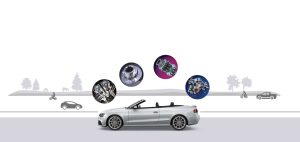Dupuytren’s commonly known as dupuytren’s disease is a hand deformity that affects the layer of tissue underneath the skin of your palm.
When this tissue thickens, the skin tightens over time and causes your fingers to be pulled sideways or inwards towards your palm. This is what is called dupuytren’s contracture.
This normally affects the fingers farthest from the thumb.
What are the causes of dupuytren’s contracture?
The exact cause is yet to be established but it has over the years been proven to be hereditary.
Who is at risk of getting dupuytren’s contracture?
- Old men aged 40 and above. More man than women are at risk of developing the disease.
- If a member of your family has dupuytren’s disease. The disease is known to run in families and you can get affected if a member of your family has it.
- If you drink too much alcohol. For some cases, too much alcohol and drug abuse has been associated with dupuytren’s.
- If you have certain medical conditions like seizures or epilepsy.
What are the symptoms of dupuytren’s?
- Inability to straighten your fingers.
- Painless lumps/nodules on your palm.
- Tightening of the skin on your palm.
- Fingers being pulled sideways or inwards towards your palm.
- Inability to perform daily activities with your palm.
Diagnosis
If you are experiencing the symptoms outlined above, it is advisable to talk with your doctor for proper diagnosis. The doctor will conduct examinations which involve feeling the nodules on your palm.
You might be asked to do some physical tests like grabbing large items or placing your hand on a flat surface to see how well the fingers straighten.
Treatment
There is no known cure of dupuytren’s as it is painless and in most cases does not advance beyond the nodules on your palm.
If you are however experiencing difficulties performing simple activities and are in pain, your doctor may recommend non-surgical or surgical treatment.
Non-surgical treatment
Non-surgical treatment usually entails injection of steroids to the painful nodule or splinting. Splinting involves forcefully stretching the affected fingers. This however is not recommended as it could injure the fingers.
Surgical treatment
The aim of this surgery is to improve the motion of your fingers. This varies from patient to patient. Your doctor makes a small cut on your palm to take out the thick tissue to straighten your fingers.
Your doctor may also make an incision to divide the thickened tissue without removing the cord.
Complications after surgery
A dupuytren’s contracture surgery can be accompanied with complications which vary depending on the nature of contracture, underlying medical conditions or the number of contractures in a single surgery.
Other than pain and stiffness, the complications of surgery are not so common.
After surgery about 70 percent of patients experience improve motion of fingers. Since there is no cure for dupuytren’s contracture, you might find yourself going for follow up surgeries.
Conclusion
The treatment methods discussed above do not mean that the contracture is healed. The purpose of the treatment is to lessen pain and enable you use your fingers.
The treatment does also not rule out the chances of recurrent the contracture.






More Stories
Rapid Mental Health Insights With AI-Powered Paper Summaries
4 Key Steps to Summarizing Animal Health Blogs for Easy Consumption
“PicoLaser: Revolutionizing Skincare with the Power of Picoseconds”